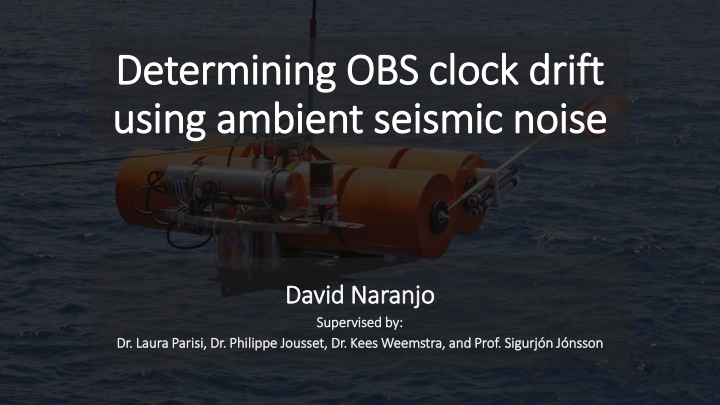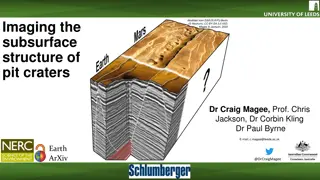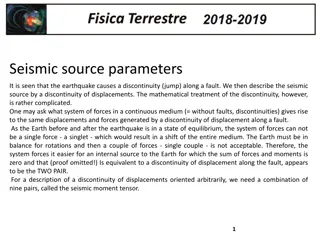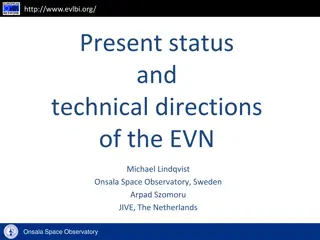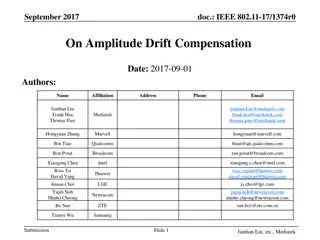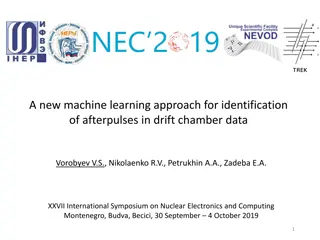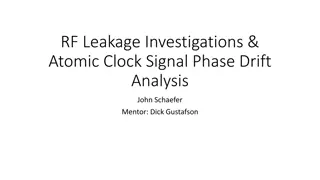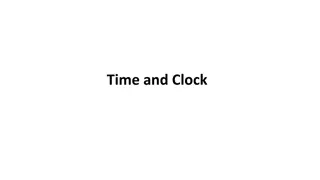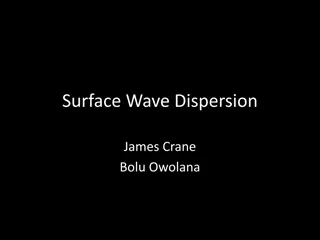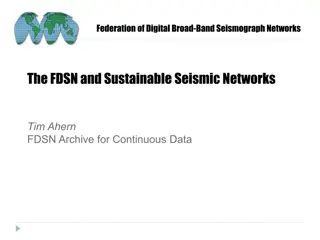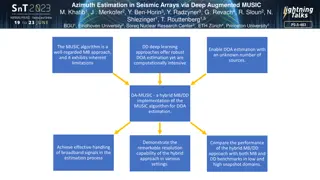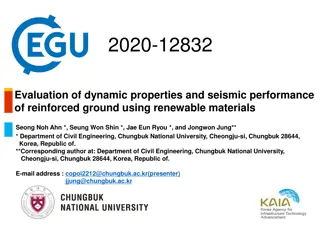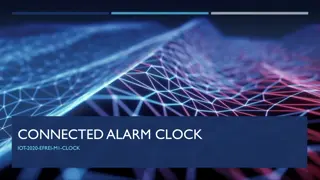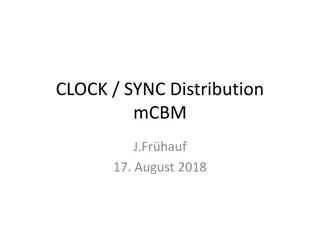Determining OBS Clock Drift Using Seismic Interferometry
Determining clock errors in Ocean Bottom Seismometers (OBSs) is crucial for accurate seismic data recording. This study presents a method using ambient seismic noise and seismic interferometry to correct clock drift in OBSs. The program developed employs Python/Fortran to analyze seismic data directly, estimating clock errors for each OBS station and identifying linear drift patterns. The open-source program will be available on GitHub soon.
Download Presentation

Please find below an Image/Link to download the presentation.
The content on the website is provided AS IS for your information and personal use only. It may not be sold, licensed, or shared on other websites without obtaining consent from the author.If you encounter any issues during the download, it is possible that the publisher has removed the file from their server.
You are allowed to download the files provided on this website for personal or commercial use, subject to the condition that they are used lawfully. All files are the property of their respective owners.
The content on the website is provided AS IS for your information and personal use only. It may not be sold, licensed, or shared on other websites without obtaining consent from the author.
E N D
Presentation Transcript
Determining OBS clock drift Determining OBS clock drift using ambient seismic noise using ambient seismic noise David Naranjo David Naranjo Supervised by: Supervised by: Philippe Jousset Jousset, , Dr. Dr. Kees Dr. Dr.Laura Laura Parisi Parisi, , Dr. Dr.Philippe Kees Weemstra Weemstra, and Prof. , and Prof. Sigurj n Sigurj nJ nsson J nsson
Clock errors in OBSs Clock errors in OBSs: : OBSs suffer from clock drift (timing of the recorded data deviates from the actual time). Accurate timing is critical for most applications in seismology. We built an open-source Python/Fortran program to correct these errors. The program uses seismic interferometry to correct the errors using the data directly. 2
What is ambient noise What is ambient noise and seismic and seismic interferometry? interferometry? Seismic interferometry principle: Cross- correlating signals create new virtual seismic responses (Wapenaar, 2010). Shift Ambient seismic noise is defined as the continuous noise stream that is being recorded. (Modified from Wapenaar et al., 2010) 3
Calculating the clock error Calculating the clock error The equation that describes clock error for a given instrument is: (Modified from Wapenaar et al., 2010) Shift Shift We can therefore build a system of equations of the form: For more details see Weemstra et al. (2021) 4
Data Data- -set and seismic network set and seismic network In the context of a European geothermal project named IMAGE, a temporal seismic network was installed (http://www.image-fp7.fr/Pages/default.aspx). Seismic data was acquired between April 2014 until August 2015 (1.5 years) 25 OBSs + 30 on-land stations. 5 Data can be retrieved from https://geofon.gfz-potsdam.de/doi/network/4L/2014
Results Results 6
Conclusions Conclusions We estimated the clock errors of each OBS station. We found a linear drift for each of the OBSs. The open-source program will be available next month on GitHub. 7
Thank you very much for Thank you very much for your attention your attention Muchas gracias! Muchas gracias! 8
Acknowledgments Acknowledgments The data used in this project was provided by the IMAGE project (Integrated Methods for Advanced Geothermal Exploration). Thanks to Laura Parisi, Kees Weemstra, Philippe Jousset, and Sigurj n J nsson. Thanks to KAUST, Delft University of Technology, and the GFZ - Potsdam. This project has received funding from the European Union's Horizon 2020 research and innovation program under the Marie Sk odowska- Curie grant agreement No 956965. 9
References References Wapenaar, K. & Fokkema, J., 2006. Green s function representations for seismic interferometry, Geophysics, 71(4), SI33 SI46. Weemstra, Cornelis & de Laat, Janneke & Verdel, Arie & Smets, Pieter. (2020). Systematic recovery of instrumental timing and phase errors using interferometric surface waves retrieved from large-N seismic arrays. Geophysical Journal International. 224. 10.1093/gji/ggaa504. Stehly, L., Campillo, M. & Shapiro, N.M., 2006. A study of the seismic noise from its long-range correlation properties, J. geophys. Res., 111(B10), B10306, doi:10.1029/2005JB004237. 10
